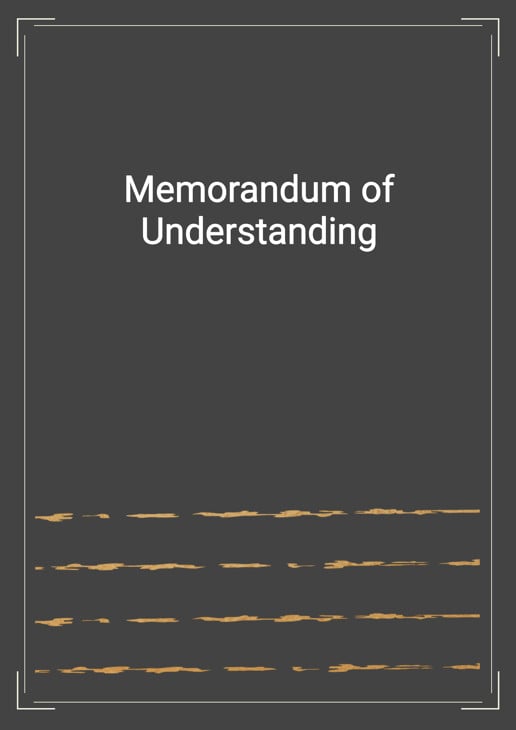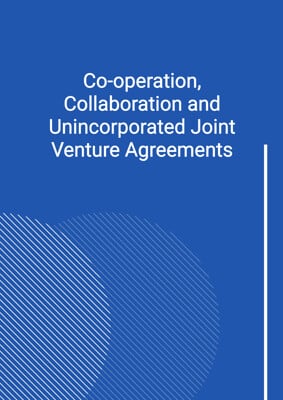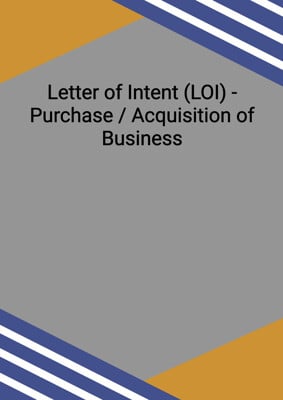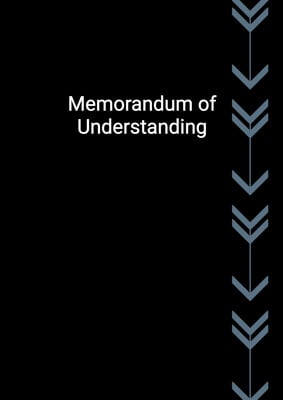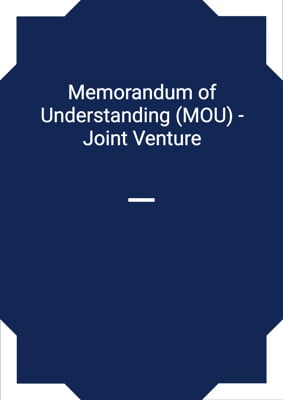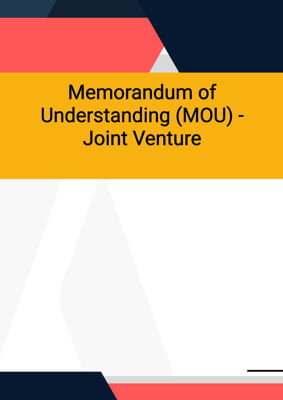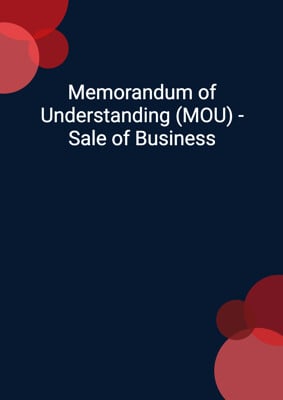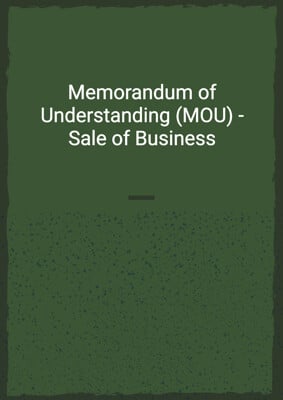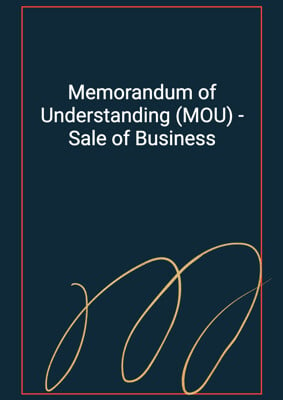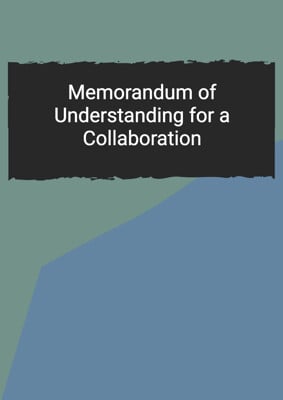How to Tailor the Document for Your Need?
01
Create Document
Fill in the details of the parties. You can click the "Fill with Member’s Information" button to complete it with information saved to your account.
02
Fill Information
Please fill in any additional information by following the step-by-step guide on the left hand side of the preview document and click the "Next" button.
03
Get Document
When you are done, click the "Get Document" button and you can download the document in Word or PDF format.
04
Review Document
Please get all parties to review the document carefully and make any final modifications to ensure that the details are correct before signing the document.
Document Preview
Document Description
This Memorandum of Understanding (MoU) is a non-binding agreement that outlines the principal terms and conditions for a proposed project between two parties. The MoU specifies the purpose of the project, commercial terms, pre-conditions, responsibilities of each party, and other legal obligations. It is not legally binding, except for confidentiality and governing law.
The MoU defines the purpose of the project, and both parties are expected to agree on detailed terms based on the principles set out in the agreement. The commercial terms section of the agreement lists the terms and conditions agreed upon by both parties. Pre-conditions refer to the conditions that must be met before the parties enter into a legally binding agreement.
The MoU outlines the responsibilities of each party. Each party has its own obligations and will take responsibility for performing them. The document also specifies that any rights, duties, and obligations stated in this agreement only apply to the parties involved, and they benefit from it. The agreement does not restrict either party from entering into any other agreement with a third party.
The agreement is non-binding except for confidentiality and governing law. The MoU is the good faith intention of the parties to proceed with the project but does not create any legal obligations except for confidentiality and governing law. The project will only proceed if legally binding documents with the terms of the project are agreed upon and executed by the parties.
The agreement has a term and termination clause stating that the MoU is effective upon the date signed and executed by the duly authorised representatives of the parties and will remain in effect for a specified period. It may be terminated without cause by either party upon 30 days' written notice.
The MoU has a warranties and representation clause stating that each party represents and warrants that it has full authority, power, and capacity to enter into and carry out its obligations under the agreement. The performance and obligations of either party should not violate or infringe upon the rights of any third party or violate any other agreement between the parties, individually, and any other person, organisation, business, or any law or governmental regulation.
Confidentiality and Announcements are an important part of the MoU. Each of the parties shall keep confidential any information obtained from the other party as a result of negotiating or entering into the Project, and no public announcement or press release regarding the project shall be made or issued without the prior written approval of the other.
The governing law and jurisdiction clause determines the governing law and jurisdiction for the MoU. Finally, the notice and service clause specifies how notices are to be delivered between the parties, and the addresses of each party for this purpose are provided.
How to use this Document?
To use this Memorandum of Understanding document, follow these steps:
1. Review the document: Read through the entire document to ensure you understand the terms and conditions that will apply to your collaboration project.
2. Identify the parties: Take note of the names and addresses of both parties involved in the project. Party 1 is located at PARTY_1_ADDRESS_SINGLE_LINE, while Party 2 is located at PARTY_2_ADDRESS_SINGLE_LINE.
3. Understand the purpose: Note that the purpose of the Memorandum of Understanding is to establish the terms and conditions of the project, which involves [DESCRIPTION]. Each party will work in good faith to agree on the detailed terms of the project based on the principles outlined in this MOU.
4. Review the commercial terms: Check the commercial terms section of the MOU to ensure that you agree with the terms outlined there.
5. Review the pre-conditions: Confirm that you have met all the pre-conditions outlined in the MOU before entering into a legally binding agreement with the other party.
6. Understand each party's responsibilities: Review the sections outlining the responsibilities of Party 1 and Party 2 to ensure that you understand your obligations.
7. Understand the mutual understanding clause: Note that the rights, duties, and obligations in this MOU will only apply to the parties involved in the agreement, and not to any third party.
8. Understand the term and termination: Note that this MOU is effective on the date it is signed by both parties and will remain in effect for a limited period, after which it can be terminated by either party.
9. Review the warranties and representations: Confirm that you have the necessary authority, power, and capacity to carry out your obligations under this MOU and that your obligations will not violate any other agreements.
10. Understand the confidentiality and announcements section: Note that any information obtained from the other party in negotiating or entering into the project must be kept confidential, except as required by law or for use by professional advisors.
11. Understand the governing law and jurisdiction clause: Note that the MOU is governed by JURISDICTION_CLAUSE.
12. Review the notice and service section: Confirm the addresses of both parties for service and take note of the various ways in which notices can be served.
By following these steps, you can ensure that you fully understand the terms and conditions of the Memorandum of Understanding before entering into a project with another party.
Not the right document?
Don’t worry, we have thousands of documents for you to choose from:
